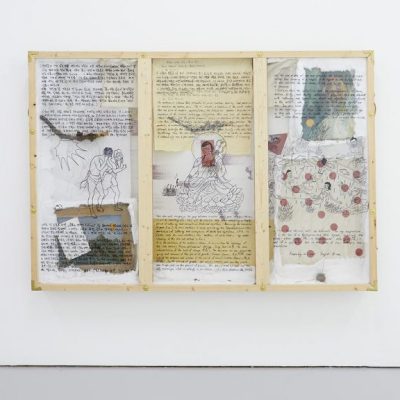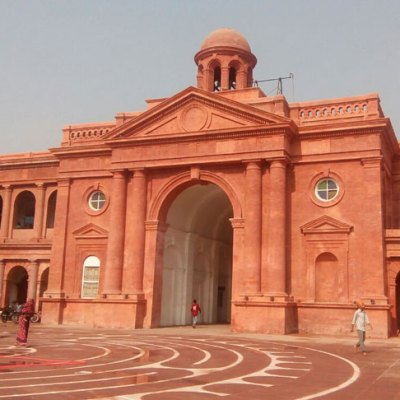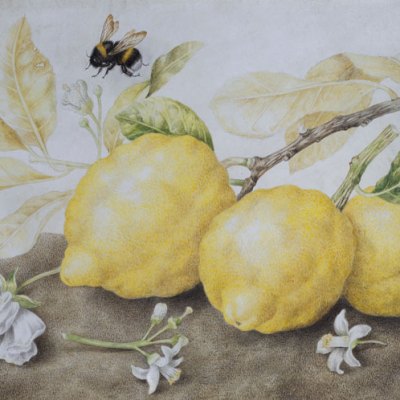This year marks the 20th edition of Asian Art in London (AAL; 2–11 November). Among the usual shows, sales, and talks will be the annual lecture, hosted by Sotheby’s Institute of Art. This year’s talk will take the form of a panel discussion where the debate will revolve around the question of London’s potential as a future global hub for modern and contemporary Asian art. It is a timely event: the appetite for classical Chinese art, in particular, remains insatiable, and dealers and auction houses are keen to build on this area of success.
While AAL has a strong Islamic and Indian art component, the event retains a heavy focus on East Asian art. This should be no surprise. While the market for Indian art is still recovering from the collapse of 2008, Chinese art has gone from strength to strength. In the past 10 years China has risen to become the second largest art market in the world, accounting for more than a third of global art sales. This boom has prompted fears that the market will become dominated by mainland collectors buying in China at the expense of specialist galleries in London and New York.
London, however, has navigated choppy waters before: AAL was founded in 1997 in response to the success of Asian Week New York and has, according to those in the know, succeeded in its brief to keep London at the centre of the global Asian art trade. ‘While there are fewer really good dealers than there were, AAL has helped,’ says Philip Constantinidi, a director at Eskenazi, one of the most respected dealers of Asian art in London and a founding member of AAL. Constantinidi adds, ‘The latest batch of customers from mainland China enjoy coming to London because it offers lots of other things. I think this has become an established event.’
Pair of caparisoned horses, China, Northern Qi period (550–577 AD), ht. 63cm. Eskenazi (price on application)

This year Eskenazi is holding an exhibition of art and objects from the Six Dynasties era (222–589 AD), which includes two magnificent painted horses from the Northern Qi period (550–577 AD). These equine figures, originally made for the ruling elite, are shown with elaborate trappings, including studs, pendants and buckles, and still carry extensive gilding. This is the first exhibition at Eskenazi dedicated solely to the art of this turbulent and once neglected period of Chinese history, and the catalogue is the largest ever published by the gallery.
Commenting on London’s continuing strength, Asaph Hyman, international head of Chinese art at Bonhams, says, ‘You have to remember, London has been a centre of the Asian art trade since the 17th century.’ He continues: ‘The mainland Chinese in particular appear to have a preference to buy and sell at auction, which could be for reasons of transparency. This is not something that the Chinese houses can match.’ But ultimately Hyman says, ‘Any location is only as strong as the objects you put in your sale.’
Bonhams’ sale of Fine Chinese Art on 9 November is a testament to the extraordinary depth and complexity of China’s trading links with Europe. In addition to a collection belonging to the marchese Taliani de Marchio (Italian ambassador to China in the 1930s), the sale will feature a set of four huanghuali folding chairs, fragile pieces of which very few examples have survived. One of the only other examples in Europe – a gift from the Chinese Emperor to Philip II – can be found in El Escorial in Madrid.
Pair of sanduo cups, China, Yongzheng period (1678–1735), ht 8.7cm. Sotheby’s London (£1.2–£1.8m)

Meanwhile, a short stroll away on Bond Street, on 8 November Sotheby’s is offering a pair of famille-rose cups from the reign of the Yongzheng Emperor (1678–1735), which have been exquisitely decorated with the sanduo (three abundances) motif: pomegranate, peach and citron are delicately rendered here on a pure white ground. Depictions of the three fruits together symbolise the blessings of long life and many sons, and were often offered as gifts to the Emperor.
The continuing strength and depth of fine Chinese art in London is given further credence by Marchant’s exhibition of Kangxi famille-verte, works from a time when trade between Europe and China was beginning to flourish and when China boomed under the long rule of the Kangxi Emperor.
Saucer depicting three figures from the stories of the Water Margin (c. 1690), China, Kangxi period, diam. 17.5cm. Marchant (£78,000)

While East Asian art captures much of the attention, London also remains the undisputed world leader in the field of Islamic and Indian art. As Andrew Butler-Wheelhouse of Sam Fogg, a dealer with a dedicated Indian and Islamic art department, explains, ‘London has a long tradition of being a global city of trade and culture […] Great collections of Asian art have been built up, dispersed and reconstructed here for more than 150 years.’
This year Sam Fogg will be exhibiting a collection of Islamic calligraphy, which includes work by Fakhri of Bursa (d. 1618), one of a number of Ottoman calligraphers known to have excelled in the delicate craft of qita, or cut-out calligraphy. Butler-Wheelhouse believes this field has benefitted from an increasing interest from contemporary art collectors: ‘Even if you can’t read the script itself you can appreciate the strength of the line.’
Exhibitions of Indian art in November include Mayfair dealer Francesca Galloway’s display of the Louisa Parlby Album, a collection of watercolours by Indian artists commissioned by members of the British community in Bengal at the turn of the 19th century. These fantastically detailed and evocative works, which include topographical scenes, religious festivals, studies of flora and fauna, and depictions of Palladian mansions, are reminiscent of the Hyde Collection at the British Library. They demonstrate the attraction of Mughal and Indian art at a time when the market for India’s 20th-century painters such as Gaitonde and F.N. Souza continues to recover.
There are many reasons to be optimistic about the future of London as a hub for Asian art. Earlier this year in New York, Christie’s recorded its highest-ever total for an auction series in its Asian Art Week sales, which realised £272,497,754. With London continuing to compete with its American rival – and even better placed to attract collectors from Europe, the Middle East and Asia – the city looks set to remain the leading light of the Asian art scene, both classical and contemporary.
Asian Art in London takes place at various venues from 2–11 November.
From the November issue of Apollo. Preview and subscribe here.



